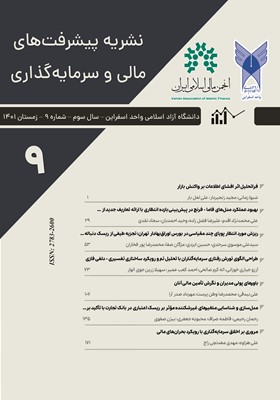-
-
List of Articles
-
Open Access Article
1 - Meta-analysis of the effect of information disclosure on market reaction
Shiva Zamani Majid Zanjirdar Ali Lalbar -
Open Access Article
2 - Improving the performance of Fama - French models in predicting expected returns by offering new definitions of risk factors in the Tehran stock exchange
Ali Mohammadnejadaghdam Alireza Fazlzadeh Vahid Ahmadian Sajad Naghdi -
Open Access Article
3 - Dynamic multi-scale expected shortfall in Tehran Stock Exchange: a spectral decomposition of tail risk across time horizons
Seyed Ali Mousavi Sarhadi Hosein Izadi Mojgan Safa Mohammadreza Pourfakharan -
Open Access Article
4 - Designing the behavioral bias pattern of investors with theme analysis and fuzzy interpretive-Delphi structural approach
Arezo Jabari Khouzani Allah Karam Salehi Ahmad, Kaab Omeir Soheila Zarinjooy Alvar -
Open Access Article
5 - Managers' money beliefs and financing attitudes
Ali Beidaghi Mohammad Reza Vatanparast Mehrdad Sadr Ara -
Open Access Article
6 - Modeling and identification of nonfragile variables affecting credit risk in Tejarat Bank with an emphasis on fintech technologies
Rahman Rahimi Fahemeh Sarraf Mahboobeh Jafari Bijan Safavi -
Open Access Article
7 - A review of investment ethics with the approach of financial crises
Ali Hazaveh Mahdi Madanchi Zaj
-
The rights to this website are owned by the Raimag Press Management System.
Copyright © 2021-2025







